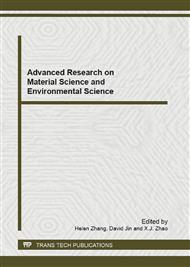p.56
p.61
p.65
p.69
p.73
p.78
p.82
p.86
p.89
Research of Novel Functional Stealthy Nanomaterials
Abstract:
With the continuous development of Electronic Warfare Technology (ECM) and new requirements of military modernization, stealthy technology played an important role in military equipment. Mechanism of new stealthy continues to be broken through and numbers of successful developments of new types of stealthy materials are put into use. New stealthy materials are the basis and key of stealthy technology and their developments are promoted by the improvements of detection and guidance of military technology. The studies of new stealthy functional nano-materials are analyzed and the stealthy mechanism of functional materials is introduced. The research progress, classification, preparation methods and the radar absorption mechanism of stealthy for new stealthy functional nano-materials are discussed. The new stealthy functional nano-materials are compared with the traditional radar absorption materials. The development trend and application prospects of stealthy functional nano-materials are also estimated.
Info:
Periodical:
Pages:
73-77
Citation:
Online since:
June 2012
Authors:
Keywords:
Price:
Сopyright:
© 2012 Trans Tech Publications Ltd. All Rights Reserved
Share:
Citation:


